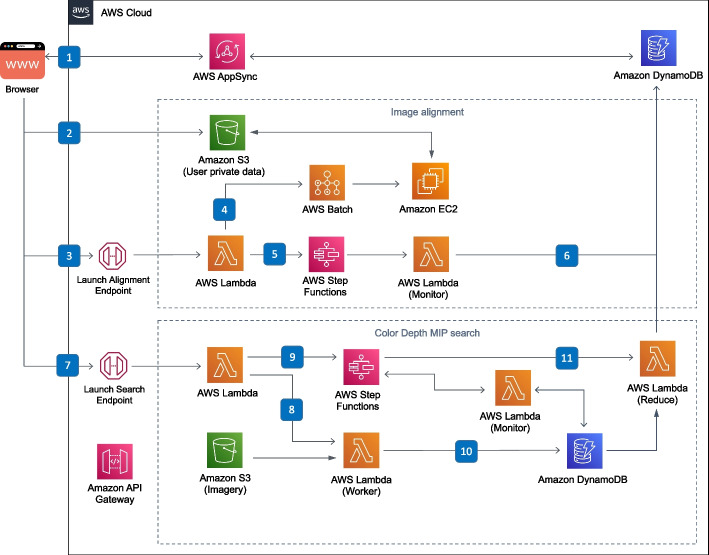Fig. 13.
Serverless back-end for custom search. The user initiates a search by uploading an image, and three messages are sent to the back-end: (1) Using AppSync, a new record is created in DynamoDB to track the search workflow, (2) the image is uploaded to a private user folder on S3, and (3) the client starts the alignment process by invoking a Lambda function. (4) A Batch job is created, which allocates an EC2 node and runs the alignment Docker container, fetching the uploaded file from S3, and depositing the aligned CDM images back on S3. (5) A Step Function periodically runs a Lambda to monitor the progress of the Batch job. (6) Once the alignment job is finished, it updates the workflow state in DynamoDB, which notifies the user via AppSync. Back in the browser, the user is asked to create a search mask from one of the resulting CDM images, and this mask is uploaded to S3. (7) The client calls a second endpoint to begin the search, which calls a Lambda that (8) recursively starts the burst-parallel search workers as well as (9) the monitoring Step Function state machine. (10) When a worker finishes, it records its result in a DynamoDB table. Once the monitoring Lambda detects that all workers are finished, (11) it runs the reducer which produces a search result that is updated in the DynamoDB workflow table, notifying the user again through AppSync that the search is complete

